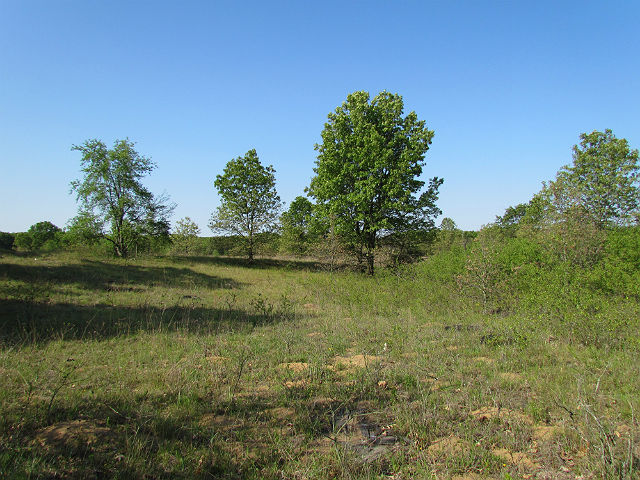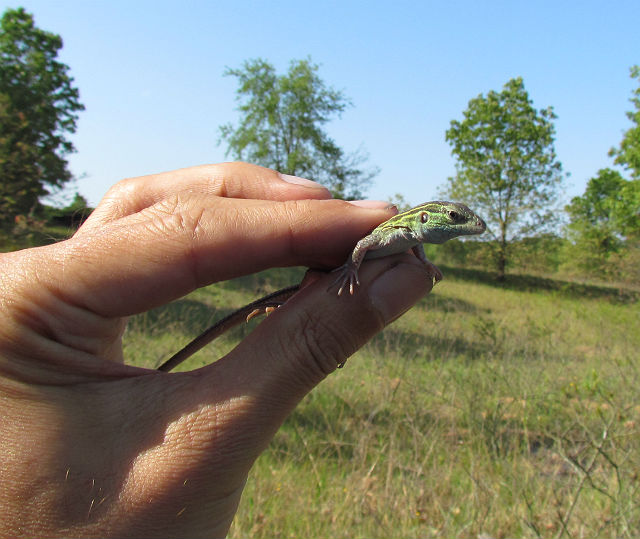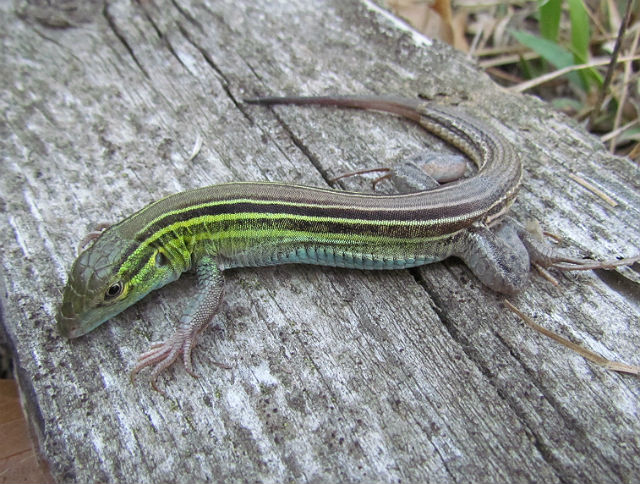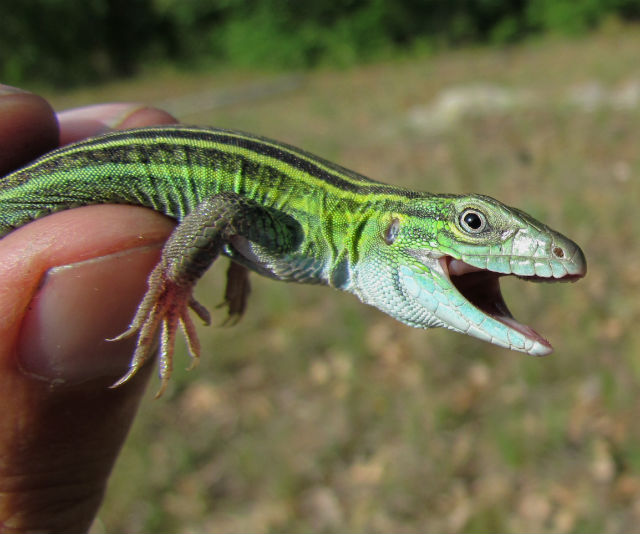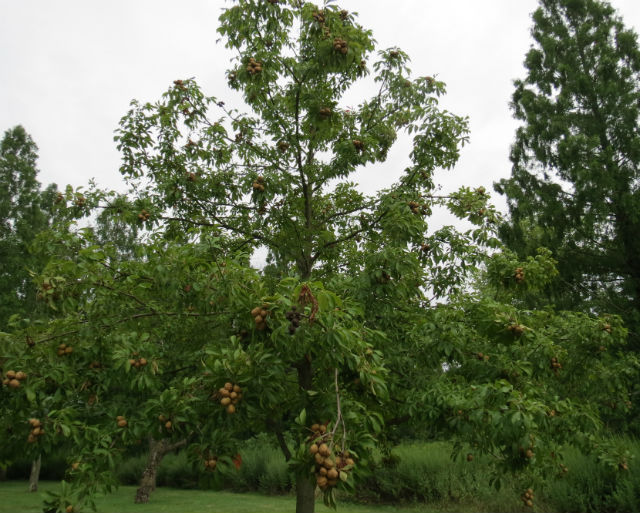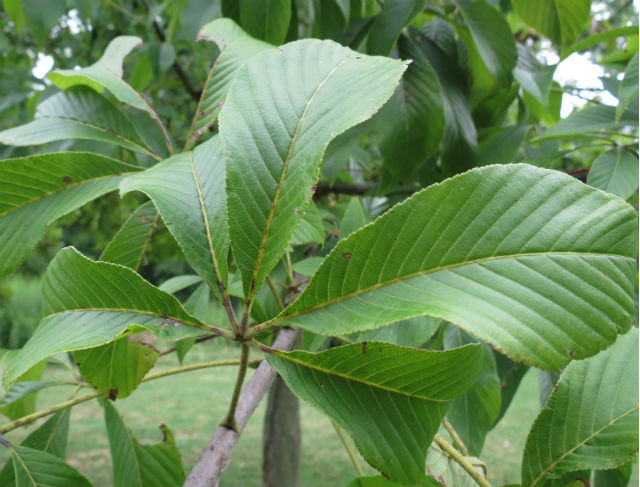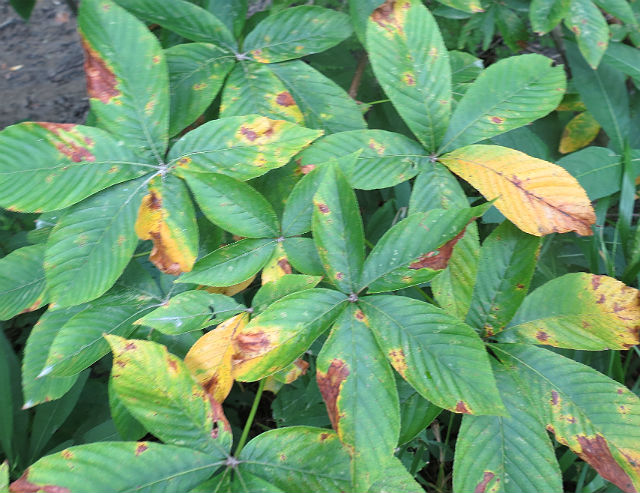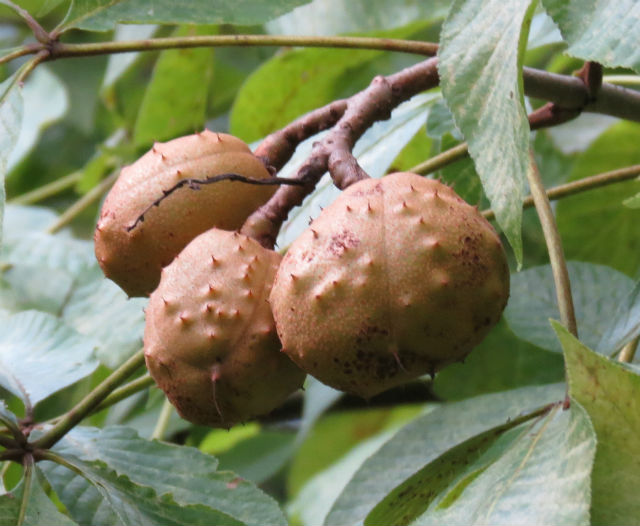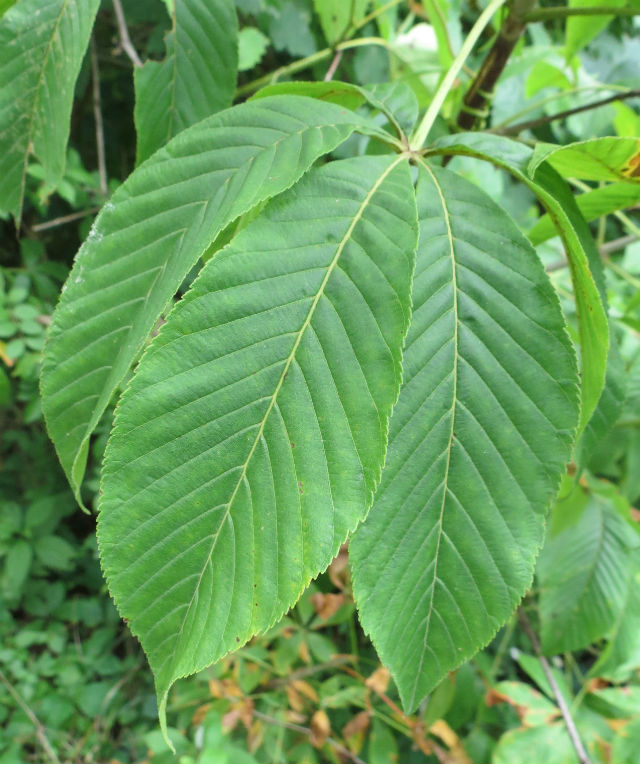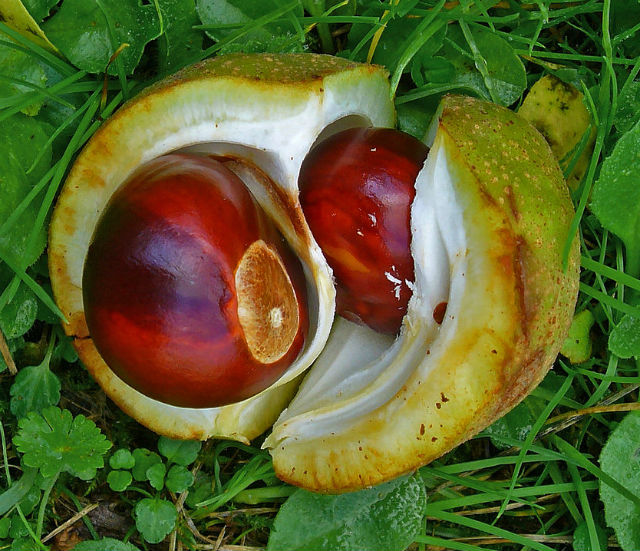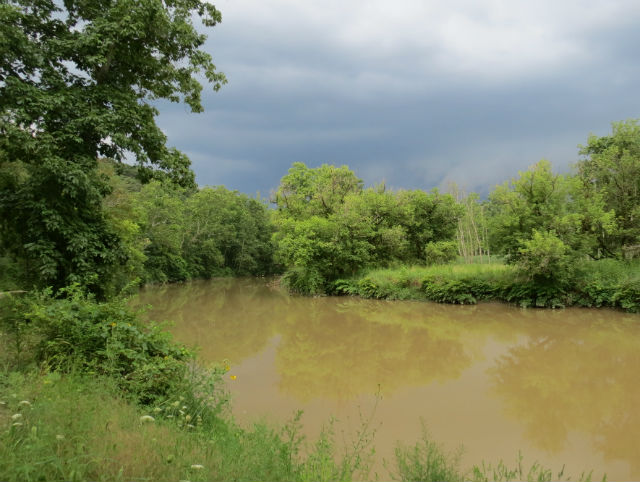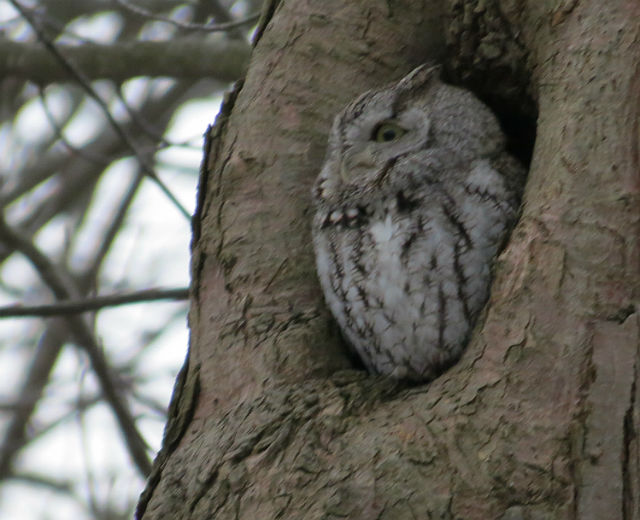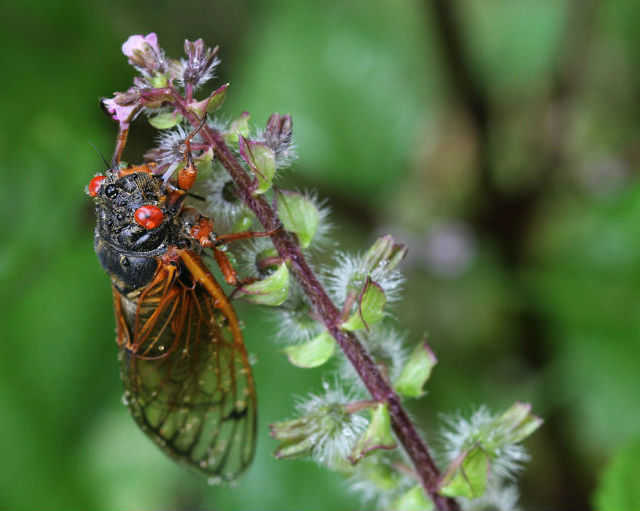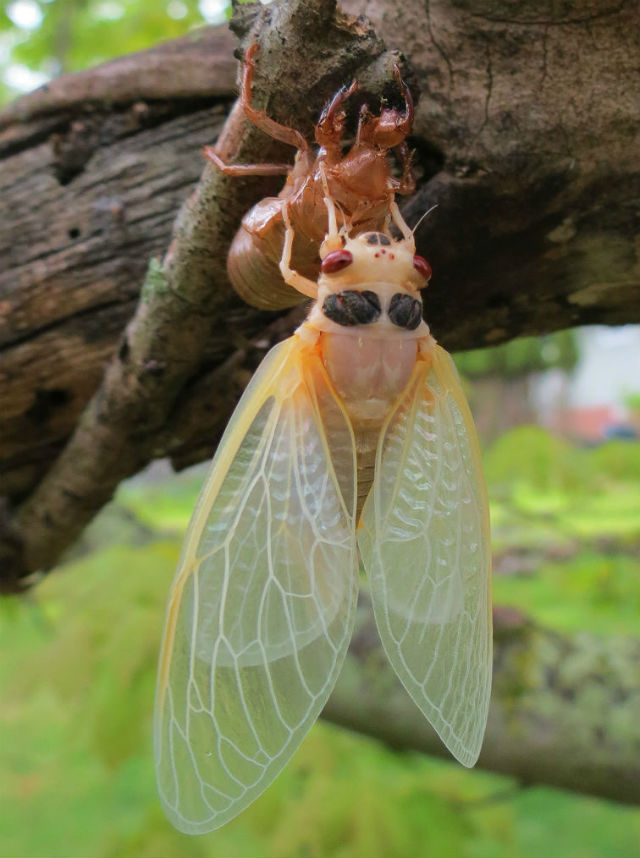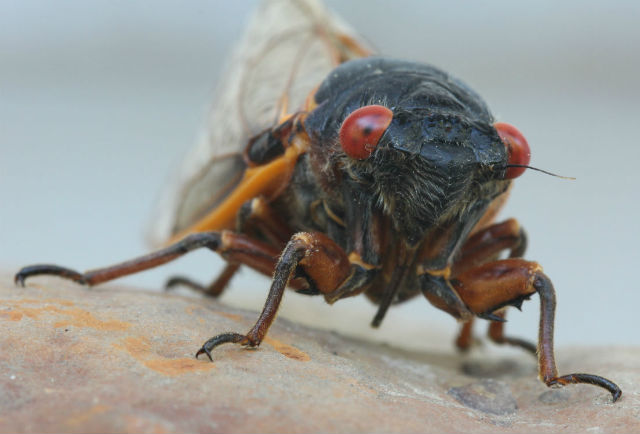What’s the fastest lizard in the land? Here in the United States, that distinction would go to racerunners, which have been clocked at 18 miles per hour. While visiting the sandhill prairies of Illinois, I caught a few of the reptile speedsters.
Related to the whiptail lizards of the western US, these are a day-active species which prefer a habitat of scrubby areas and sandy substrate for burrowing. This liazrd’s close relative, the Six-lined Racerunner, resides in the southeastern United States.
As its name implies, the racerunner is extremely fast and agile. These lizards are quite striking in appearance. Adult males obtain a vibrant green coloration on their heads and necks. Like its relative to the east, the Six-lined Raxcerunner, this subspecies has six pale blue or yellow horizontal lines that run along the length of its 6-10 inch body.
This reptile has to be quick to grab dinner as well escape being eaten by predators. Insects and spiders comprise the bulk of the diet, though other prey of suitable size may also be eaten. The Prairie Racerunner is a very active forager. It moves along the ground with quick, jerky movements as it samples smells with its tongue while it looks about.
It was very cool to come across this midwest speed specialist while visiting the Land of Lincoln.

